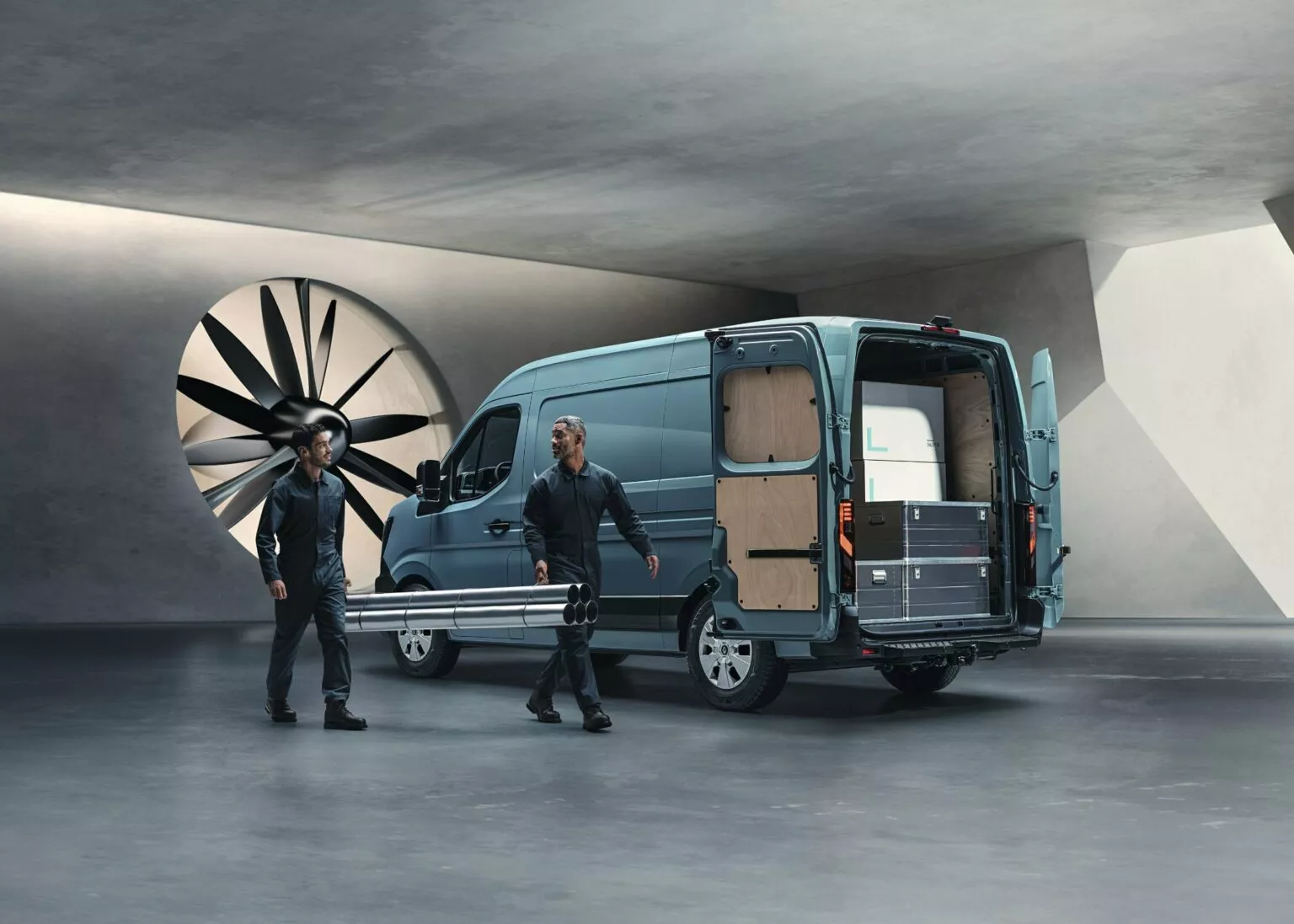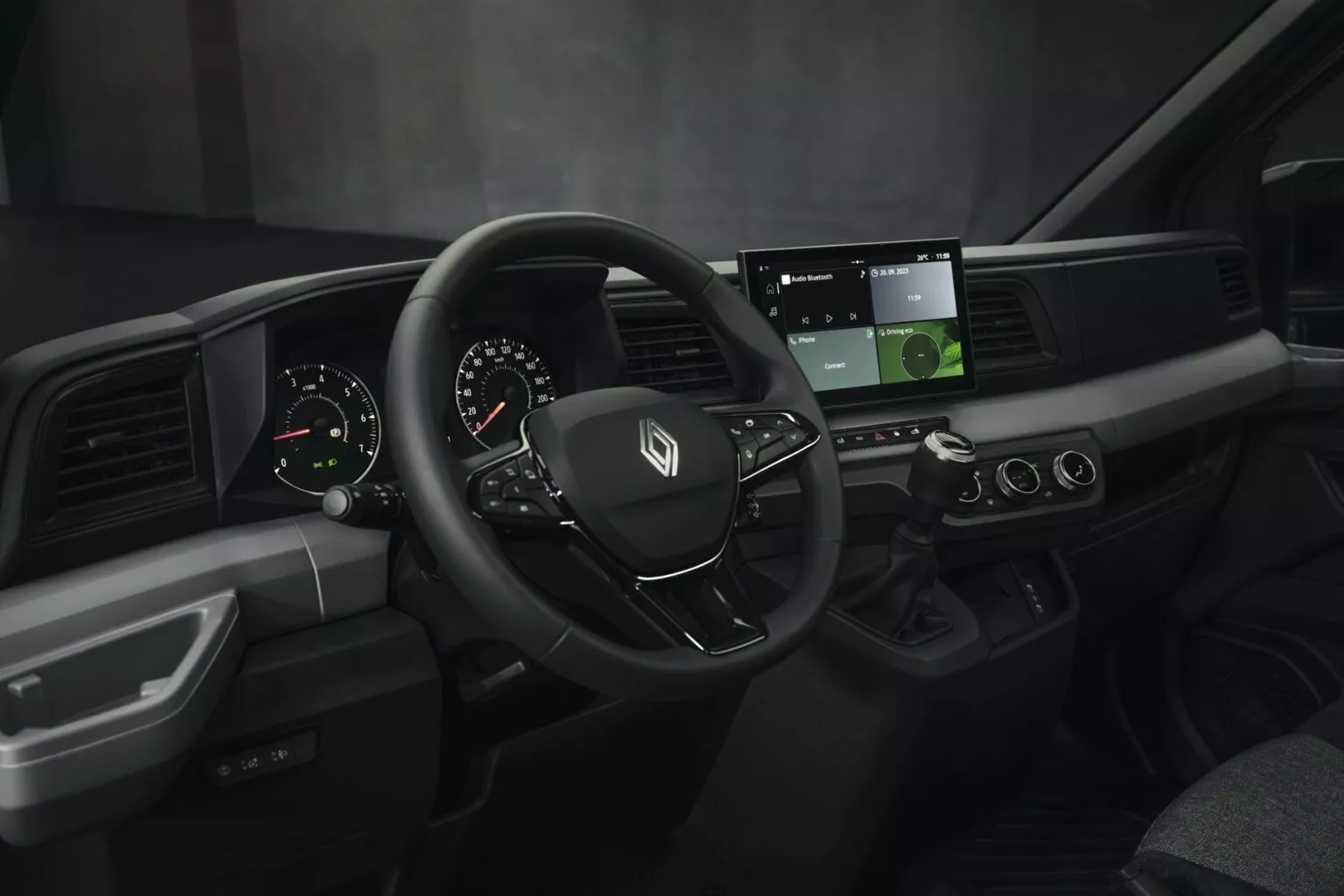Renault has officially revealed its groundbreaking Master light commercial vehicle (LCV), marking the first clean-sheet design in 13 years for this versatile workhorse. Beyond its contemporary aesthetic, the all-new Master boasts enhanced aerodynamics, claiming the top spot in efficiency within its category. The lineup includes diesel, fully electric, and hydrogen powertrain options, signaling Renault’s commitment to diverse and sustainable mobility solutions.
The exterior redesign mirrors styling cues from Renault’s passenger lineup, featuring Megane-style C-shaped LED headlights, a revamped emblem on a larger grille, and modern intakes on the bumper. Distinctive lines and a redesigned tail underscore that this is not merely a facelift but a comprehensive redesign. Interestingly, the color palette offers seven standard options, while a staggering 300 special hues cater to individual preferences.

The new generation’s shorter hood, reduced windscreen angle, and narrower rear end significantly enhance aerodynamics, contributing to the “highest efficiency in its category.” Renault asserts that the diesel-powered model achieves a remarkable 39g/km reduction in CO2 emissions, dipping below the 200 g/km threshold. The fully electric versions deliver a 20% improvement in energy consumption, translating to an extended range.
The Renault Master’s “multi-energy” platform accommodates diesel, electric, and hydrogen powertrains. The Blue dCi diesel engine comes in four power outputs (105 hp, 130 hp, 150 hp, or 170 hp) with improved fuel efficiency and reduced CO2 emissions. Diesel engines are available with either a manual or a 9-speed automatic gearbox.

The fully electric variant features a single electric motor producing either 129 hp or 141 hp, coupled with a 40 kWh or 87 kWh battery pack, offering ranges of 180 km (112 miles) and 410 km (255 miles), respectively. Notably, the larger battery supports 130 kW DC fast charging, adding 229 km (142 miles) of range in just 30 minutes. The electric model also supports Vehicle-to-Grid (V2G) and Vehicle-to-Load (V2L) charging capabilities.
In the near future, Renault plans to introduce hydrogen H2-tech and fuel cell (FCEV) powertrain options, with specific specifications expected from the hydrogen-focused HYVIA sub-brand.
Inside, the S-shaped, curvy cockpit boasts a 10-inch touchscreen for OpelR Link infotainment, digital instrument cluster options, climate control rotary dials, and a steering wheel borrowed from Renault’s passenger lineup. The interior, featuring a sophisticated dark theme, prioritizes practicality with a 25% increase in in-cabin storage, USB-C ports, wireless chargers, cupholders, drawers, and a foldable central seat that transforms into a desk. Safety features include up to 20 Advanced Driver Assistance Systems (ADAS).

With more than 40 versions offering various lengths, heights, and cargo area configurations, the Renault Master provides unparalleled flexibility. Cargo capacity ranges from 11 to 22 cubic meters, and the payload capacity reaches up to 4 tonnes. Renault claims the best-in-class loading width and length.
Competing with models such as the Mercedes-Benz Sprinter, VW Crafter, Ford Transit, and Stellantis lineup, including Fiat Ducato, Citroen Jumper, Peugeot Boxer, Opel Movano, and Toyota ProAce Max, the Renault Master is set to be produced in Batily, France. Pricing details will be disclosed closer to the scheduled spring 2024 market launch.

